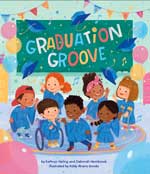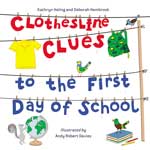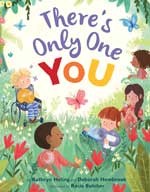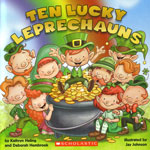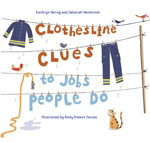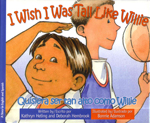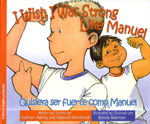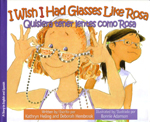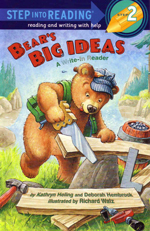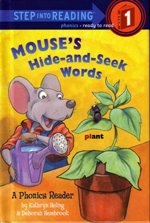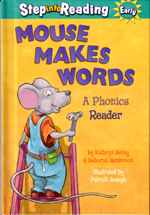Graduation Groove
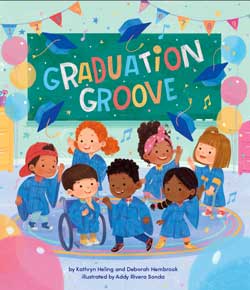 Written
by
Written
by
Kathryn Heling and
Deborah Hembrook
Illustrated by Addy Rivera Sonda
(Little Bee Books, 2021)
Book Description
This book celebrates all of the things that make kindergarten great. Whether it is making friends and projects, or story time with a great teacher, kindergarten is full of amazing experiences.
Graduating from kindergarten and starting first grade is an important milestone in every kid’s life.
Whether you’re excited or nervous, this book will have you dancing into first grade!
Graduation Groove at Amazon.com >>
GRADUATION GROOVE
Learning Opportunities
LITERACY LEARNING
Before Reading
Look at the front and back covers
Read about the co-authors and illustrator – what does ‘co-author’ mean?
Discuss the title – what does ‘graduation’ mean?
What does ‘groove’ mean?
What symbols in the background help to show music and movement?How many characters do you see on the cover?
What details did the illustrator use to show this is a celebration?
What kind of celebration have you enjoyed in your life?
What does this illustration remind you of?
What are the characters wearing? Why?Make a prediction – what is this story about?
During Reading
 Look at the title page – are the characters the same as on the cover?
Look at the title page – are the characters the same as on the cover?
Which character do you relate to? Why?
Each verse has rhyming words – after getting to know the story and the verses, the adult reader can leave off the last word and children can shout it out.
The verses have a rhythm and a beat.
Can you clap it or use musical instruments that showcase this?
What character shows fear or worry on the stage? Why? What helps him feel better?
Where in the story does a character feel sad? Why?
What do you think his friend is saying to him?
Look for a girl that shows she may be worried. What does a friend do to help?
Find the vowels displayed – sing the alphabet and jump for the vowels.
After The Reading
Generate a list of rhyming words from the story. Can you think of more words that rhyme?
Create a list of new and interesting vocabulary words – graduation, groove, diploma, celebration, gown, pace, beat, style, stage, jitters. If you have a writing journal, add them to your glossary.
Name five different settings from the story. Which is your favorite?
Which is your favorite character? Why? Write some talking or thinking bubbles for that character.
What grade are you in? What are your favorite memories? Write a story about it and add illustrations.
Get together with the next grade level and buddy up. Have the older children share exciting things about their learning. Each buddy can read their grade memory books.
MATH LEARNING
Find the page where the girl is being measured. What tool was used to measure her height? Use three different units of measure to measure you and a friend. Create a chart with the results.
The illustrator includes patterns throughout the story – on blankets, carpets, wallpaper... how many can you find? Now look around you! How many patterns do you see?
The illustrator incorporates 2D and 3D shapes throughout her drawings. Go on a shape hunt as you look at each page! Can you find squares, triangles, rectangles, circles, spheres, ovals, cylinders and more? Look around you – how many shapes can you find in your classroom, bedroom?
Find the page where you see numbers. Count by 10’s to 100. Can you make a flag banner like the one in the illustration? Are you counting the days of school?
SCIENCE LEARNING

In the beginning of the story there is a character that likes learning about space. What details does the illustrator include that show this?Can you create a space mobile or poster? You can use a clothes hanger, string and paper for the mobile. Which is your favorite planet? Why?
There are two different classroom pets shown in the story. What are they? What does environment mean? What does each pet need to survive in their environment? What names would you give the pets in the story? Do you have a pet? What care does your pet need?
What page in the story shows a science experiment? What equipment did the children use? Research how to make a volcano and try the experiment. Take pictures before... during... after and create a poster about the experience. Did the volcano erupt? If not, why? Try again!
CREATIVE DRAMATICS AND THE ARTS
Ask families to share caps and gowns that you can add to your dress up area in the classroom. You can also order caps and gowns in different colors for young children that can be used in a dress up area.
Laminate diploma templates that children can play with writing their names with wipe off markers.
Include pretend cameras, microphones, party foods and celebration props for acting out the graduation ceremony. Maybe the students could build a stage out of large blocks.
Invite family members to come and talk about their school and graduation experiences. A high school student could model their cap, gown and diploma. A parent/grandparent could show their cap, gown and diploma.
Make a cap with a fancy tassel out of paper, yarn and glitzy decorations.
In the art center add different templates and ribbon cutouts to make diplomas and awards for friends.
Do you see a long train on one of the pages in the book? Each child can create their own train car with his/her photo. Connect the cars together for a bulletin board display. Is it a First Grade train, Second Grade train?
There are musical notes and dance moves throughout the book. Which dance move have you tried? Put some celebration music on and try some of the moves that the characters from the story are doing.
SOCIAL EMOTIONAL LEARNING
 Follow the different characters throughout the story. Look at their faces. Who is feeling happy, excited and proud? Who is surprised? Who looks worried or scared? Can you find a character who feels sad? Is it okay to have those feelings? Why?
Follow the different characters throughout the story. Look at their faces. Who is feeling happy, excited and proud? Who is surprised? Who looks worried or scared? Can you find a character who feels sad? Is it okay to have those feelings? Why?
Discuss strategies you could try if you are feeling scared, worried or sad. In the story how did the characters get help if they were feeling that way? How can friends help? When in your life did you feel all these different feelings?
Find places in the story where friends were being kind through their facial expressions and/or with gestures. As a class, practice those facial expressions and gestures with one another. High fives, fist bumps, holding hands, thumbs up, hand jive, etc. –– how does that make you feel?
Can you see friends sharing during the story? Where do you see children being respectful to the teacher and to one another? Where do you see relationships being formed?
Looking at the different characters notice how they are the same and different. Look at their unique features like skin color and hair. Is there someone that needs glasses to see... walking sticks for balance... a wheel chair to move? Which character lost a tooth? Which character loves a favorite hat? Differences are fabulous! What makes YOU unique? Create self-portraits like shown in the story and display them to celebrate differences.
Have an ‘End of Year’ celebration with families. This does not need to include caps and gowns and a ceremony. It could be a celebration of learning. The celebration could be an Open House where the train art and self-portraits could be on display. Students can share memory books and other learning. There could be a photo booth or area with props for children to wear or hold. And of course there needs to be some special treats! The focus is on a year of friendship, growing and learning!
